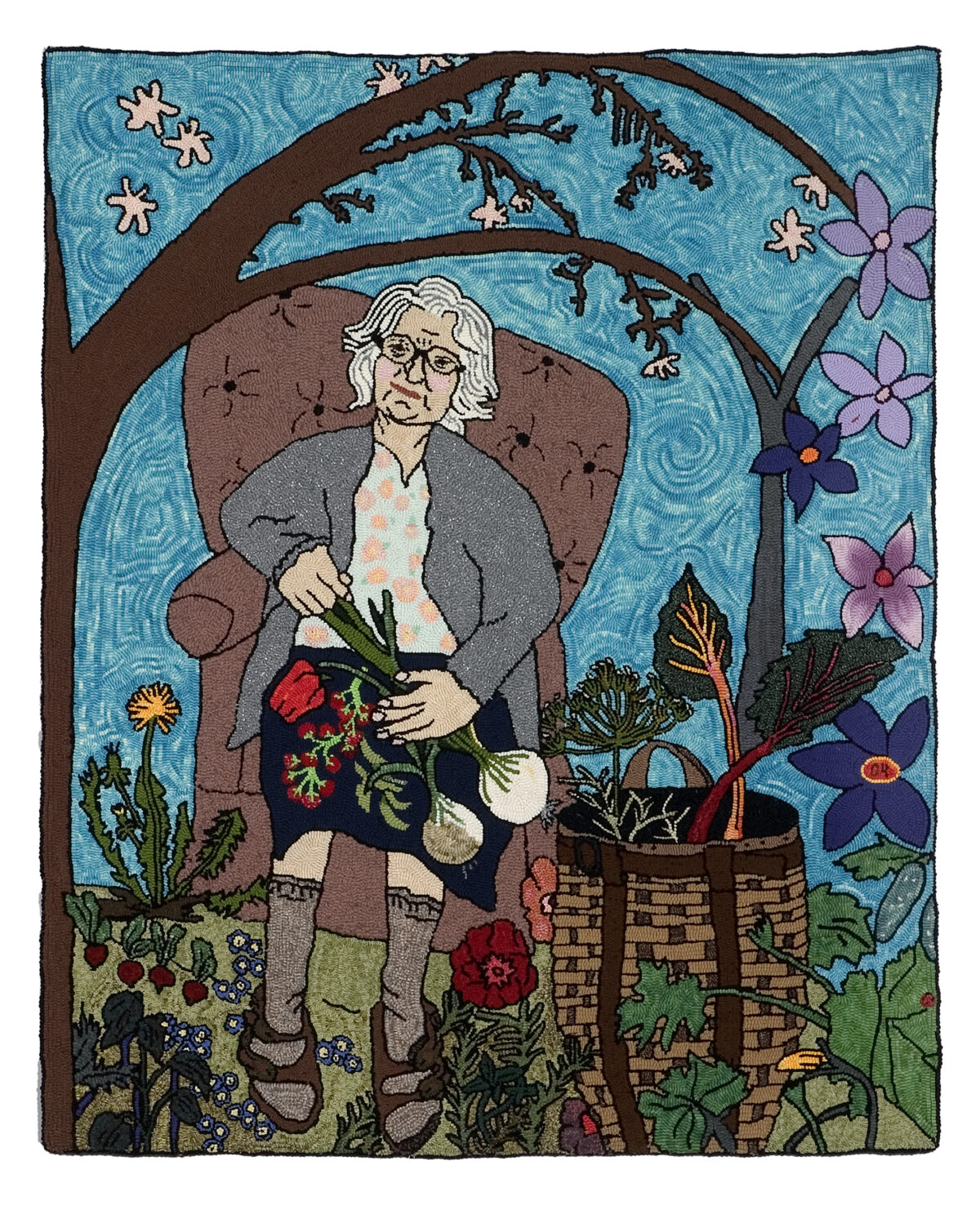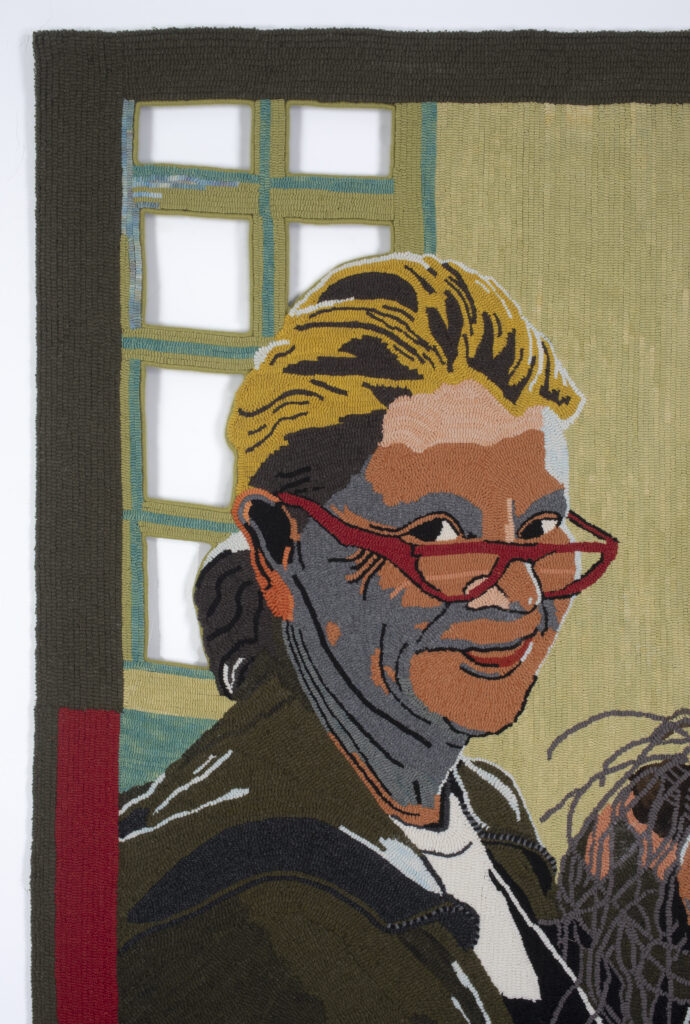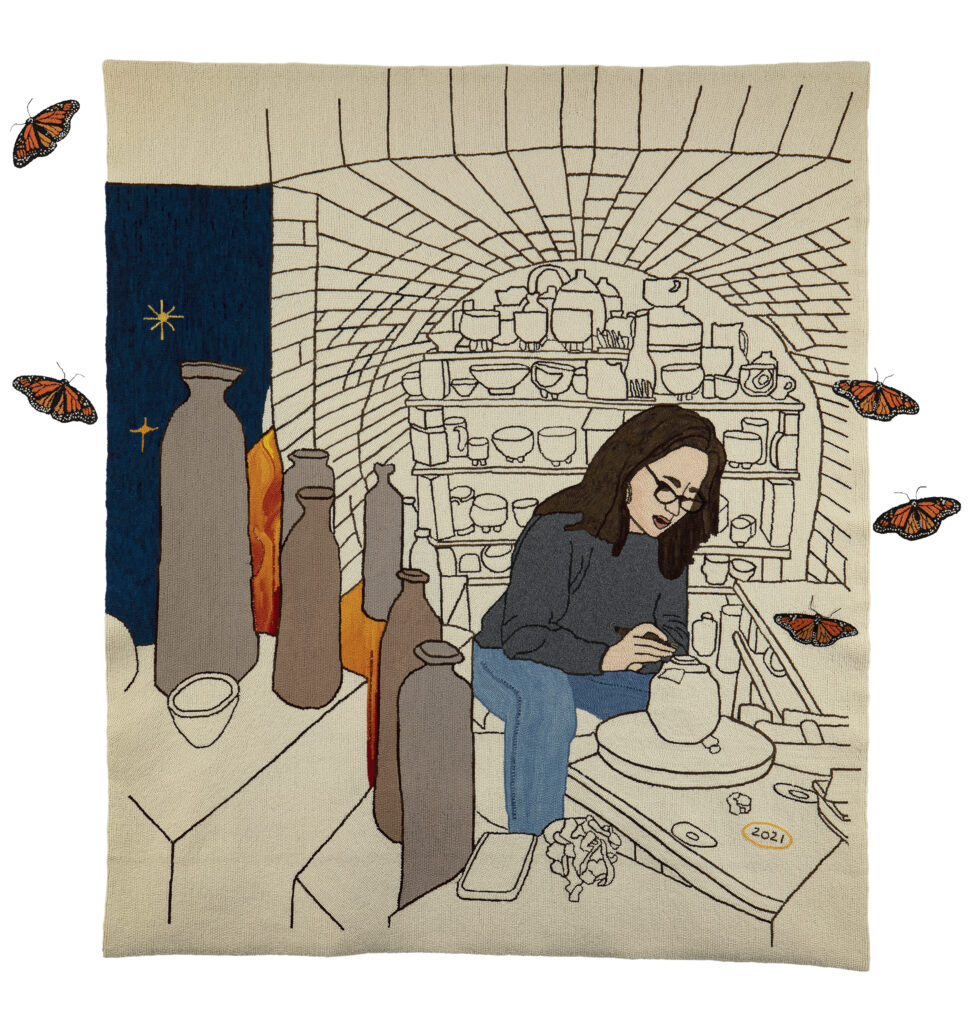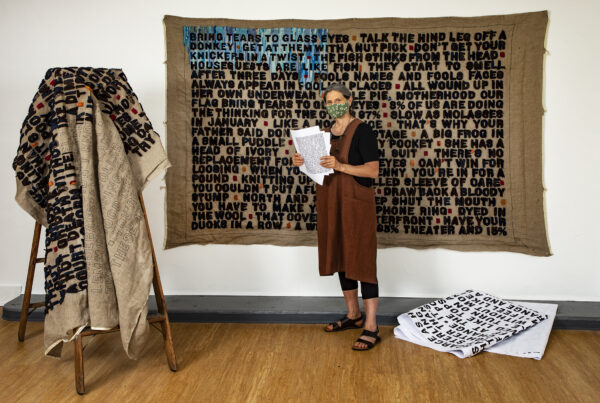In 2004, artist Liz Alpert Fay created a portrait of Ruth Spring—a 92-year-old naturalist, organic gardener, and painter who had deeply inspired her. At the time, she didn’t realize this one portrait would spark a project spanning two decades. The result is Ordinary/Extraordinary Women, a series of 16 large-scale textile portraits honoring women who have shared her life. Each work pays tribute to the everyday brilliance and strength that these women embody.
“I didn’t set out to make a series,” she explained. “But each time I encountered a woman in my life who inspired me, I felt compelled to tell her story.” After finishing each portrait, she would photograph it and roll it up for storage. “It’s amazing—and a little daunting—to look back and see how much work I’ve completed over the years,” she said. “I’ve never seen more than two of them displayed together, so it’s been incredible to see them all hang together in one space.”

Ruth Spring in Her Garden; 2004; recycled and hand-dyed wool on linen; hand hooked; 58 x 47 in.
The women featured in the portraits represent a personal timeline. “They’ve enriched my life and the lives of so many others. They’ve contributed to their communities in meaningful ways, often quietly, and often overlooked.” The final piece in the series is a self-portrait that includes bits of wool from every other portrait. “These women are all a part of me,” she said.

Francine Even: At Snow Farm; 2021; recycled and hand-dyed wool on linen; hand hooked, background squares cut out and bound; 84 x 59 in.

Kristen Müller: Like Magic She Courts the Flame; 2021; new and recycled hand-dyed wool on linen, silk and cotton threads on cotton, gold lamé fabric, vintage sewing notions, recycled plastic coated wire; hand hooked, punch needle embroidery; 80 x 66 in.
Each work is larger than life, not only in scale but in spirit. Most were based on photographs she took of the women in their environments. The colors, textures, and materials chosen reflect each woman’s essence. Fay uses traditional rug hooking as the primary technique—looping hand-cut strips of wool through a linen backing—but she also incorporates hand appliqué, embroidery, punch needle embroidery, and spool knitting. “Most of the materials are recycled or hand-dyed, and in some portraits, I’ve included fabrics from family or friends to deepen the story,” she said.

To further explore each woman’s life, she’s compiled a book to accompany the exhibition. “Even though I knew these women well, I interviewed them and asked them to invite a close woman friend or relative to write a short biography about them. Each woman also gave me something they had worn—something personal—to inspire the portrait. The book includes their stories, our relationship, and photographs that offer a richer view of who they are.”
Reflecting on the years she’s spent immersed in the project, Fay said she’s most surprised by the volume of work—and the deep gratitude she feels for still having most of these women in her life.
Nature has remained a constant companion throughout her creative process. “Each piece reflects what was going on in my life at the time. Morning walks in the land trust near my home help me think through ideas. I find inspiration in my garden, my hens, and the rhythm of the seasons. Winter, when the garden rests, is my most productive time in the studio. That’s when I can really sit with the stories I’m trying to tell.”
lizalpertfay.com ׀ @lizalpertfay
All photos by Brad Stanton.
***
Cami Smith is the Fiber Art Now media manager, community engagement coordinator, and a mixed-media artist.
Subscribe today and get our current issue FREE. Plus, get instant access to 20 original ebooks and 12+ years worth of digital magazines.

Over 120,000 fiber artists connect with Fiber Art Now through our various platforms – and we want you to join us! Connect and get inspired by contemporary fiber arts around the world.
For the latest news, special offers, and exclusive content you won’t find anywhere else, sign up for our newsletter below!